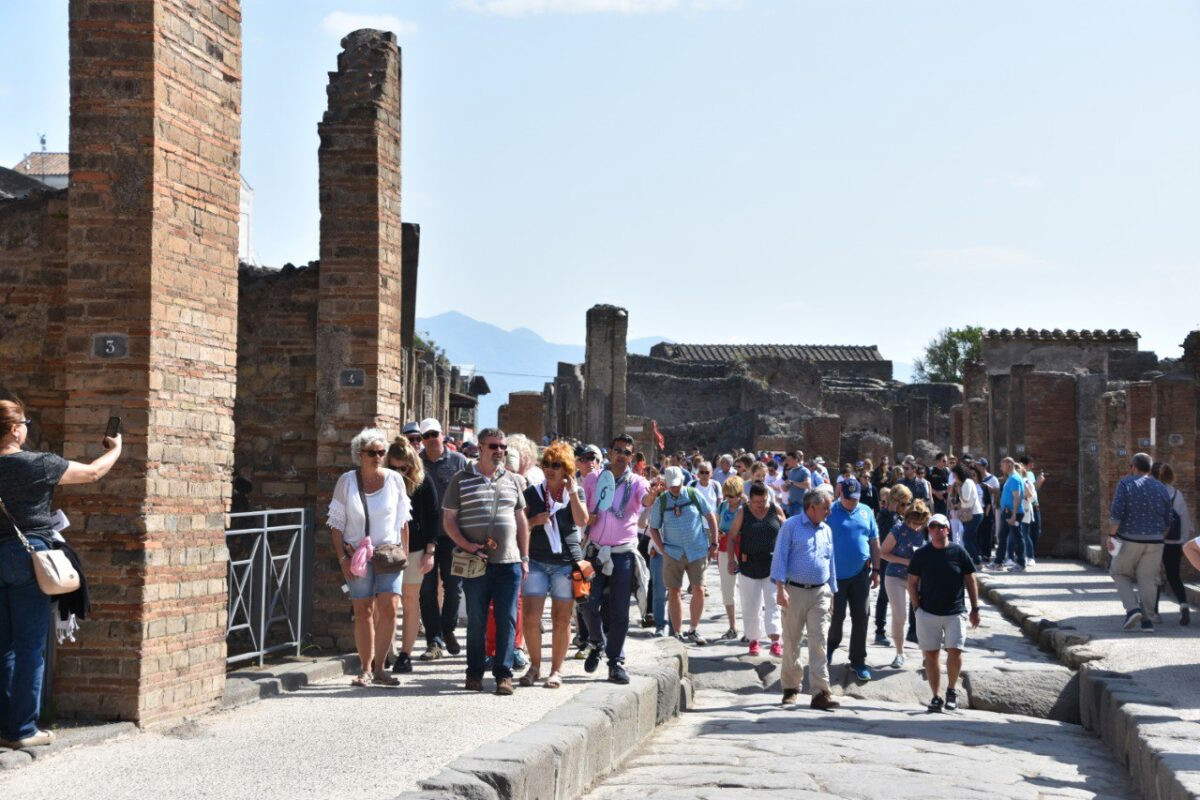An interdisciplinary study conducted by theUniversity of Salerno, in collaboration with the Pompeii Archaeological Park, analyzed the possible correlation between new excavation campaigns andincreased tourist flows. The results, published in the latest issue of the journal Values and Evaluations, DEI - Tipografia del Genio Civile, highlight theabsence of a statistically significant relationship between these two factors.
Despite the fact that in 2024 the Pompeii Archaeological Park surpassed the 4 million visitor threshold for the first time, the choice to visit the UNESCO site would seem to depend on different variables, mainly related to global trends, economic trends and international crisis contexts. According to the research, even major restoration works or the reopening of domus and neighborhoods in the ancient city would not have significantly affected the overall number of accesses.
However, the study points out that new excavation campaigns can instead induce substantial growth in underdeveloped sites, such as those in the area of ancient Pompeii, such as the excavation of Civita Giuliana where a large villa with a servile quarter of unparalleled size in the surrounding areas is being unearthed. The excavation is being conducted in cooperation with the Torre Annunziata Public Prosecutor’s Office, which in 2017 had stopped illegal excavators who had been looting the villa for years. The Ministry of Culture, at the request of the park’s management, has already allocated funds to continue excavations at this site and to start a project for restoration, accessibility and opening to the public.
“These are conclusions of great relevance to our daily work, thanks to a study that has never been done before,” commented the director of the excavations, Gabriel Zuchtriegel, among the authors of the study. “These are results that cannot be ignored but are indeed important to calibrate the delicate balance between conservation, enjoyment and knowledge of the archaeological heritage through new excavations, which in Pompeii carry an enormous responsibility. Everything that is brought to light needs monitoring and continuous maintenance, which is one of the priorities of our work in recent years. Unfortunately, this was not always the case in the past, partly because since the first excavations in 1748, protection and preservation have made great strides; today we are working with digital systems to monitor the site and are experimenting with the use of Artificial Intelligence for protection. This new study strengthens us in the strategy, shared with the Park’s Scientific Committee and the Ministry of Culture, of investing in new excavations always taking into account the various instances of sustainability, conservation, enjoyment and knowledge, with a special focus on areas outside the ancient city ancient city, in ’Greater Pompeii,’ that is, in that immense archaeological landscape between Mount Vesuvius and the sea, where new excavations can still contribute significantly to the development of an area, which in antiquity formed one with the city of Pompeii.”
“The model we chose to describe this phenomenon consists of an S-curve,” explains Luigi Petti, co-author of the publication. “This means that at the beginning a lot has to be invested in the excavation of a newly discovered site, without having immediate benefits in terms of tourism development. In Pompeii, this phase corresponds to the first decades after 1748, when systematic excavations in the ancient city began. Then follows a phase of strong growth: one must continue to invest in research and excavation in order to develop the potential of a site, both scientifically and touristically. In Pompeii this happens mainly between the mid-19th and mid-20th centuries. There follows a phase of flattening of the curve: even if you continue to invest and launch new excavations, the tourist benefits, but also the scientific benefits, no longer grow at the same rate. At the same time, other sites around Pompeii are still in the early stages of this model, in addition to Civita Giuliana this applies to Oplontis, Boscoreale and Longola.”
“The interventions of excavation of additional areas within the walls of the ancient city of Pompeii, although remarkable with regard to the set of new knowledge they can produce, are sustainable only if they are included in a framework of concrete effective management and maintenance of the historical-archaeological heritage, since the economic balance between the effects of the new projects on the community and the obligations that derive from the actions of preserving and enjoying must be carefully verified, ”m, Antonio Nesticò points out. “Only in the light of careful assessments of the long-term costs and benefits arising on the entire reference territory from the investment and management strategies is it possible to outline policies for the enhancement of the entire Archaeological Park, while extending the gaze from ancient Pompeii to the sites of Boscoreale, Oplontis and Civita Giuliana. Thus, a remarkable prospect seems to be the possibility of creating a broad tourism system in which to implement joint actions that include both the area within the walls of the ancient city and the sites outside, according to the current name ’Greater Pompeii’. By virtue of the study conducted on the sigmoid function that connotes the evolution of tourist flows, the creation of a synergistic network of the different sites may become an important objective to pursue.”
 |
| In Pompeii, increased tourist flows do not depend on new excavations or reopening of domus: a new study |
Warning: the translation into English of the original Italian article was created using automatic tools. We undertake to review all articles, but we do not guarantee the total absence of inaccuracies in the translation due to the program. You can find the original by clicking on the ITA button. If you find any mistake,please contact us.